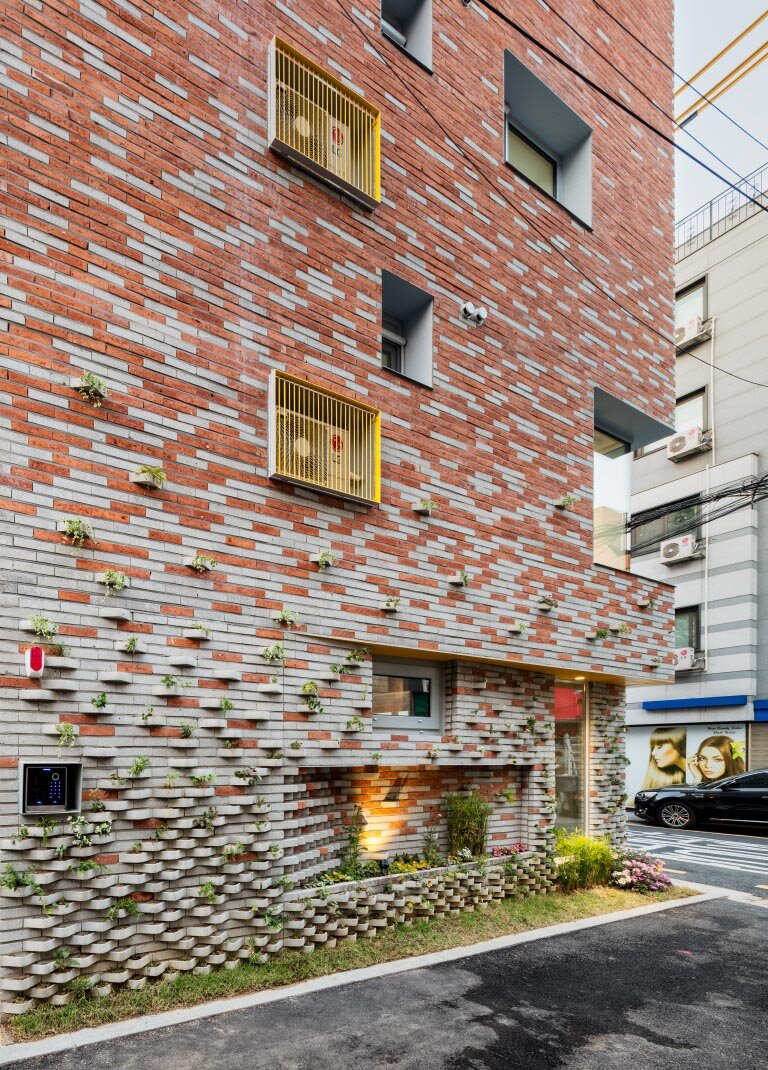#17703. Eco-friendly brick façade with integrated greenery and contrasting accents

This modern residential complex exemplifies an innovative approach to urban architectural façade design. The building features expressive brickwork in two distinct gradations — the upper section showcases rich terracotta tones interspersed with light-colored bricks creating a rhythmic textural pattern, while the lower portion transitions to a lighter palette with an inverse ratio of brick colors.
Particularly noteworthy is the unique solution for the ground floor, where the architect has employed a "living wall" technique — the brickwork forms numerous small pockets housing plants. This gives the building an ecological character and softens the strict geometry of the brick masonry. Such façade design not only serves an aesthetic function but also contributes to improving the microclimate around the building.
The yellow metal grilles of the window openings on the upper floors serve as expressive accents, contrasting with the brick surface and adding a recognizable character to the building. Minimalist modern windows of various sizes and shapes create a dynamic rhythm across the façade plane.
For a private home, a similar solution could be adapted through a combination of different brick tones, creation of textural elements, and integration of greenery directly into the façade structure. Even on a smaller scale, such an approach would create expressive architecture with a unique character.